I won my second Premodern tournament in a row. I played a deck I built the day before that I hadn’t played a game with, using cards I was very familiar with.
My previous win was with my take on Land Tax/Scroll Rack control. This is an established archetype in Premodern, but I didn’t like the established approach, which is basically a Green-White Prison deck with Oath of Druids.
For those unfamiliar with these decks or Premodern, let me explain what’s going on here.
If you have Land Tax and fewer lands than your opponent, you get to search for three lands and put them in your hand, as the card says. If you also have Scroll Rack, you can put those cards and any other cards you have in your hand that you don’t want back on top of your deck and draw that many cards. Then, if you still have fewer lands than your opponent during your next turn, you can search your library to get those same lands back into your hand, then shuffle away the other cards you didn’t want. This process basically changes Land Tax from searching for three lands to drawing three cards, except you can also get specific basic lands if you want them instead of random draws. So with those two cards you draw 3 extra cards each turn, but it’s a little better than that because you have 3 more Land Taxes in your deck, and each of those will draw an additional 3 cards every turn once they’re in play, making it easy for this draw engine to outscale anything else in the format.
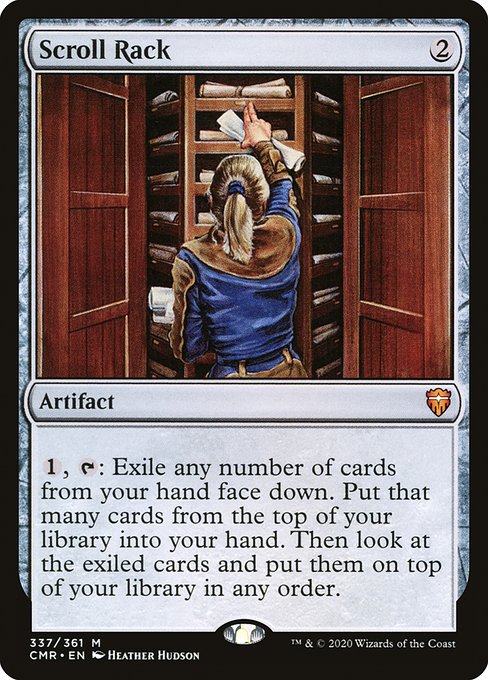
The challenge is that you can only do this while you have fewer lands than your opponent, and typically, when you’re drawing a lot of cards, you want to play more lands so that you can cast them, but if your opponent doesn’t play a lot of lands, you won’t be able to either.
The most important part of solving this problem is Mox Diamond. This not only makes your deck much faster because you can play it and a land, but also lets you cast more spells without playing more lands.
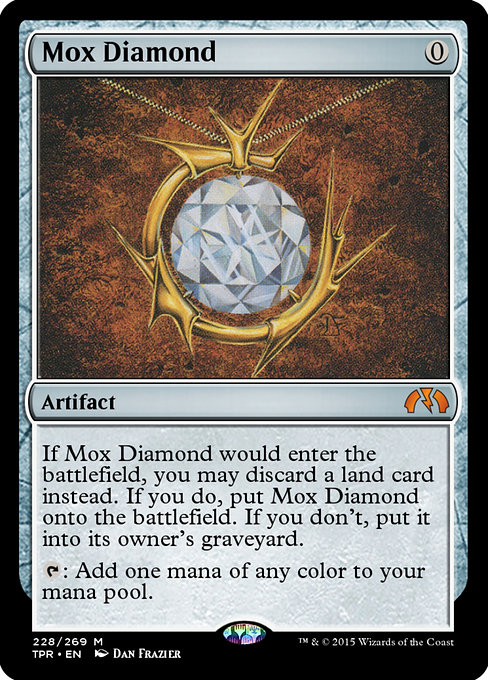
So the core engine of this deck is Land Tax/Scroll Rack/Mox Diamond, but once you’re playing those there are some other cards that are such good fits as to be essentially mandatory.
Enlightened Tutor allows you to assemble this combination, which is important because neither Land Tax nor Scroll Rack by itself is really that great. Once you have both of them, you can use Enlightened Tutor to find other important cards and you only need to play one copy of each of those, or you can just get more mana with Mox Diamond. Also, the card disadvantage doesn’t really matter because you draw so many cards so quickly when you get going.
Swords to Plowshares is arguably the greatest removal spell ever made. It so happens to cost a single white mana like Land Tax and Enlightened Tutor. When you’re drawing a lot of cards you really want the ability to exchange cards with your opponent, which Swords to Plowshares does reliably and efficiently–it’s important it only costs one mana because this deck needs to function on a tight mana constraint to make Land Tax work.
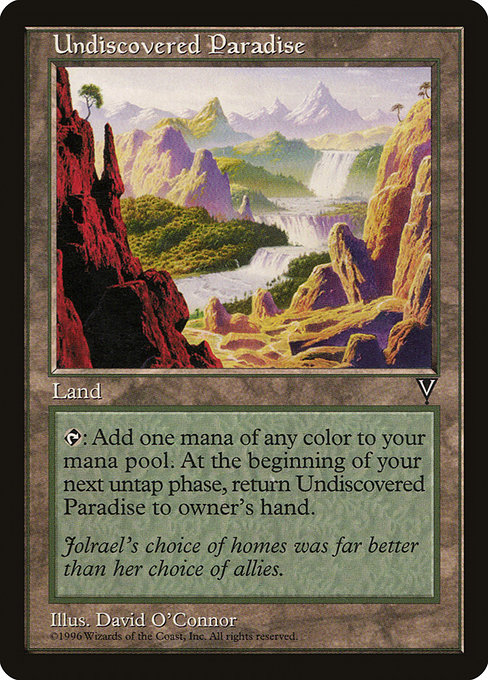
Undiscovered Paradise is another perfect fit–it allows you to use extra mana without having extra lands in play. When your Land Tax checks how many lands you have, it will be back in your hand. Using Undiscovered Paradise on the first turn to play Land Tax means that if your opponent wants to have even a single land in play, you’ll get to use your Land Tax.
Once you have four copies each of Mox Diamond and Undiscovered Paradise, you have 8 cards in your deck to give you mana of any color. Given how many cards you see, this makes it reasonable to play cards of any color and expect to cast them eventually. If you want to cast them early, you might also want a single basic land of the color needed to cast them, which gives you a 9th source, but it also means that Land Tax can find that color of mana. This brings you up to a reliable 13 sources, ignoring the fact that Enlightened Tutor can find Mox or Tax to get you there as well
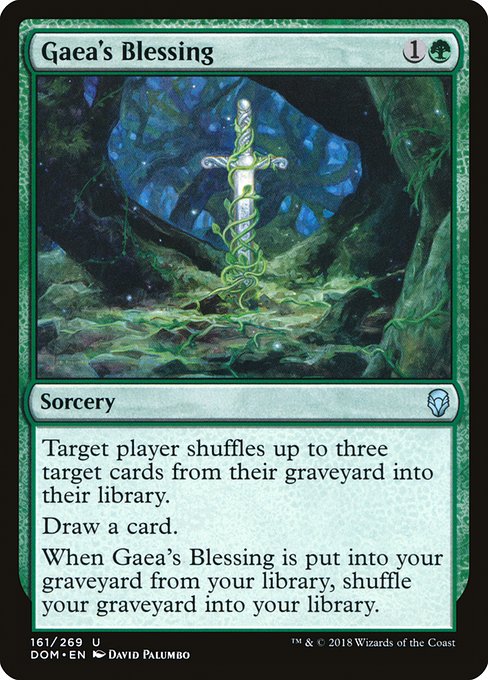
Given you can play cards of any color, the next card I consider mandatory is Gaea’s Blessing. Swords to Plowshares is so much better at what it does than any other card that I don’t want to play more removal, I just want to keep casting Swords to Plowshares, but you can only play 4 of those, so you need Gaea’s Blessing to use them multiple times. Also, when you’re drawing so many cards it’s easy to draw your whole deck, so you need Gaea’s Blessing so that you don’t run out of cards. This is also important because so many cards in this deck are devoted to the draw engine, so without Blessing you simply wouldn’t be able to do that many relevant things. But with Gaea’s Blessing, you can keep casting your meaningful spells indefinitely.
Another key piece of this engine is Gush. Some decks in this archetype don’t play Gush because they don’t play enough Islands or they don’t think they need a card draw spell given how strong their card draw engine is. But Gush is amazing in this archetype because it makes you other cards work when you don’t have Land Tax, and it lets you play extra lands to lure your opponent into playing extra lands. Once they’ve taken the bait, you get to go back two lands to trigger Land Tax.
Once you’re playing Gush and Land Tax, Foil is an incredible card because you’re looking for ways to convert these extra cards into meaningful game actions without using too much mana. Nothing’s really better at doing that than a free counterspell.
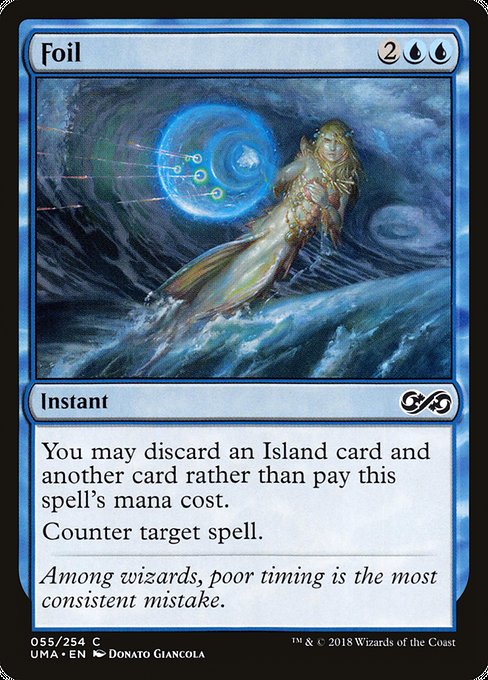
If you’re playing Gush, Land Tax, and Scroll Rack, you probably want to play Flooded Strand, as it will let you have enough white mana to reliably cast Land Tax without needing to play too many Plains. It’ll usually give you and Island, and it can shuffle away cards you don’t want with Scroll Rack, if you don’t have Land Tax.
So if all of the cards above follow as logically necessary from the premise “Mox Diamond is the best card in Premodern, and Land Tax/Scroll Rack is the best way to use it and the best card draw engine, so I want to play these cards,” you have very little room for whatever your deck actually does.
In my previous deck, I used the rest of the space to build a control deck. I played 4 Counterspells and a variety of silver bullets for Enlightened Tutor to let me deal with whatever I thought my opponents might have, which lead to this deck:
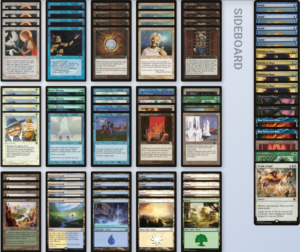
For this weekend, I expected people to come trying to beat this deck. I think that’s very difficult to do, but I think some Blue/White Control decks can be built to have a reasonable shot at that. Specifically, there’s a recent trend of playing several copies of Phyrexian Furnace, which makes my super long Gaea’s Blessing plan unreliable, so I wanted to be able to close a game out against them so that I wouldn’t simply lose to having my graveyard exiled.
My solution was to add what I consider the second best deck to what I consider the best deck.
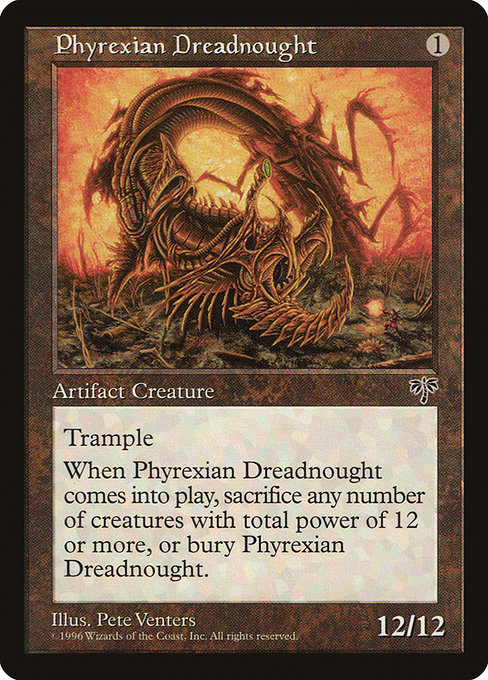
That deck is “Stiflenought”–a deck entirely designed to cast Phyrexian Dreadnought and then either Stifle its sacrifice trigger or use Vision Charm to phase the Dreadnaught out of play so it can’t sacrifice itself, then attack with a 12/12. To play Phyrexian Dreadnought, I wanted to include a 12 card package–4 Phyrexian Dreadnoughts, 4 Vision Charms, 3 Stifles, and one Oath of Druids. I looked at the 12 cards I could cut and thought about what cutting them would cost me. I’d lose a bunch of reactive answers that would make me less reliable at having inevitability against every way I could be attacked, but I thought in most cases, just being able to end the game quickly while having a bit of disruption would probably actually make me more likely to win. So I cut 2 Plains, 4 Counterspells, 1 Swords to Plowshares, 1 Enlightened Tutor, Zuran Orb, Seal of Cleansing, Phyrexian Furnace, Humility, and Spontaneous Generation and added the 12 card Dreadnought package and a fourth Gush, which I wanted to add regardless.
Once I did that, it seemed like I’d just built a better version of Stiflenought–the deck can do the same thing, but instead of using cantrips to find its pieces, it uses a broken card advantage engine. My only concern was that I was combining two decks that are each theoretically weak against Landstill as a solution to try to beat Landstill, which seemed kind of questionable. But, it lets me convert having a better card draw package into actively pressuring them, which is what I think the Tax/Rack engine needs in the matchup. But to be sure, I played 3 Brain Freeze in the sideboard, which I think they can’t actually beat–I just hold my Vision Charms until I have two Brain Freeze and mill them out whenever.
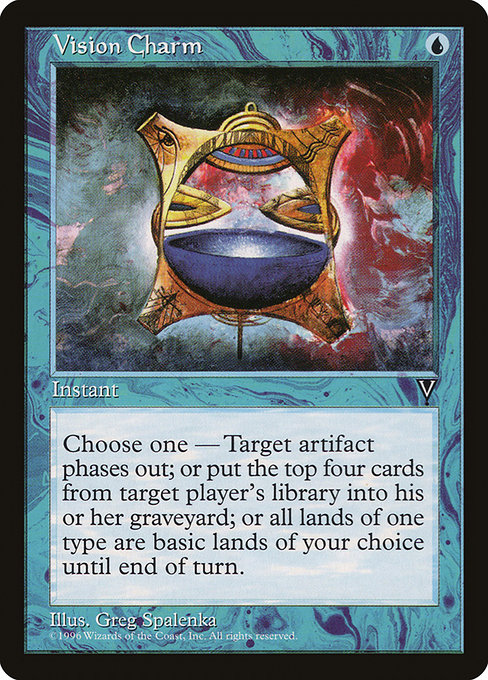
In practice, the deck played out better than I expected. It felt very good at executing both plans–it never felt like it was tripping over itself, and it seemed impossible for people to figure out how to sideboard against because it could attack from such opposite angles.
The deck felt broken relative to everything else in the format, but I actually don’t think this exact deck is really what “broke the format”. The issue is that this deck serves as proof of concept that other decks can just get spliced into the Tax/Rack engine in a way that will often improve the other deck.
I suspect that this deck represents the inflection point that proves that Land Tax needs to be banned–banning any of Land Tax, Scroll Rack, Mox Diamond, or maybe Enlightened Tutor could work, but Land Tax is the most likely–I think it’s the most unpleasant to play against, and it’s been banned before.
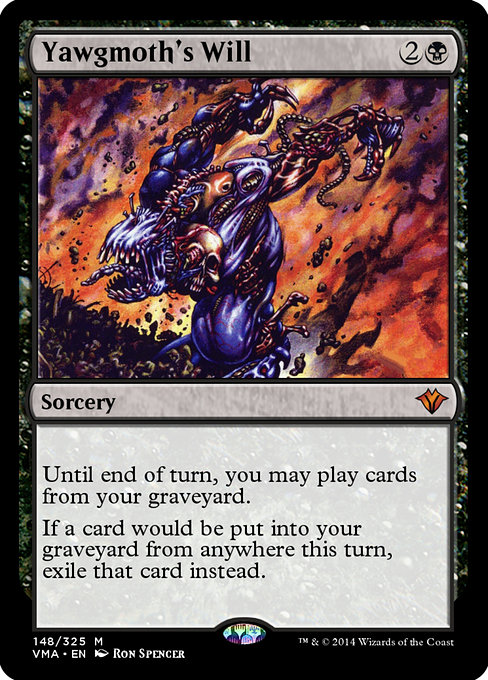
Alternatively, the solution might be to unban other cards instead of banning one of those cards. I actually favor this solution–I think the format exists to give people a place to play with old cards they loved, and I think other cards like Mystical Tutor, Yawgmoth’s Will, and Necropotence could likely be legal without overpowering the format. I think creating more exciting deckbuilding opportunities is better than constricting the format as an overall strategy. Unfortunately, I suspect that even if those cards were unbanned, Land Tax would likely still be the best thing and need a ban at some point, so even though I favor unbanning to banning to shake up the format, I think Land Tax is on borrowed time at this point.
Sam Black (any) is a former professional Magic player, longtime Magic writer, host of the Drafting Archetypes podcast, and Twitch streamer. Sam is also a Commander Cube enthusiast, and you can find Sam’s cube list here. For anything else, find Sam on Twitter: @SamuelHBlack.

